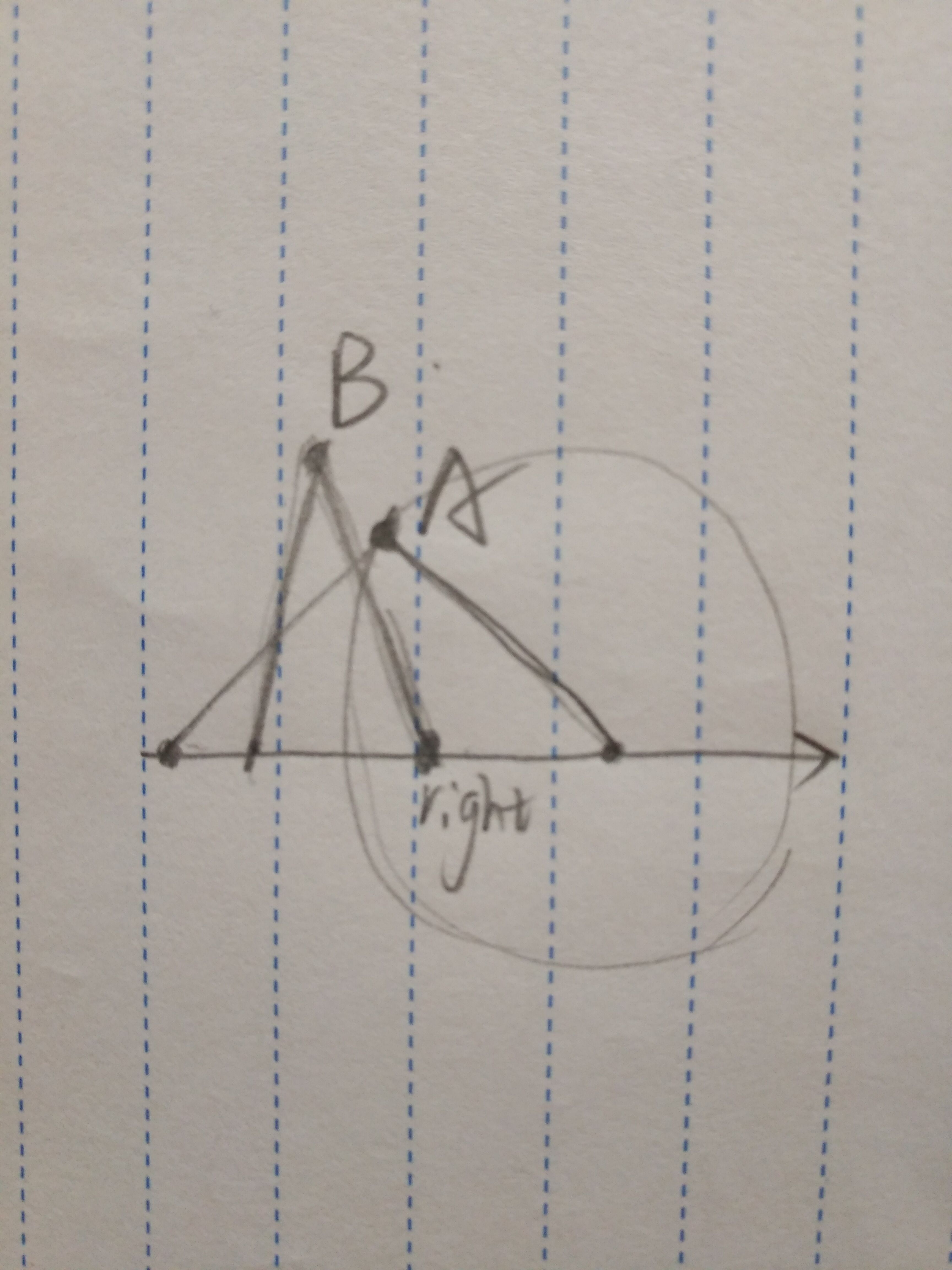Appoint description:
Description
Assume the coasting is an infinite straight line. Land is in one side of coasting, sea in the other. Each small island is a point locating in the sea side. And any radar installation, locating on the coasting, can only cover d distance, so an island in the sea can be covered by a radius installation, if the distance between them is at most d.
We use Cartesian coordinate system, defining the coasting is the x-axis. The sea side is above x-axis, and the land side below. Given the position of each island in the sea, and given the distance of the coverage of the radar installation, your task is to write a program to find the minimal number of radar installations to cover all the islands. Note that the position of an island is represented by its x-y coordinates.

Figure A Sample Input of Radar Installations
We use Cartesian coordinate system, defining the coasting is the x-axis. The sea side is above x-axis, and the land side below. Given the position of each island in the sea, and given the distance of the coverage of the radar installation, your task is to write a program to find the minimal number of radar installations to cover all the islands. Note that the position of an island is represented by its x-y coordinates.

Figure A Sample Input of Radar Installations
Input
The input consists of several test cases. The first line of each case contains two integers n (1<=n<=1000) and d, where n is the number of islands in the sea and d is the distance of coverage of the radar installation. This is followed by n lines each containing two integers representing the coordinate of the position of each island. Then a blank line follows to separate the cases.
The input is terminated by a line containing pair of zeros
The input is terminated by a line containing pair of zeros
Output
For each test case output one line consisting of the test case number followed by the minimal number of radar installations needed. "-1" installation means no solution for that case.
Sample Input
3 2 1 2 -3 1 2 1 1 2 0 2 0 0
Sample Output
Case 1: 2 Case 2: 1
题意 :有n个小岛 并给出海岸线上雷达覆盖的半径d,雷达只能放置于海岸线上(x轴),给出每个小岛的坐标,问至少要多少个雷达才能把小岛全部覆盖。
解法一:(左交点 从小到大排序)
思路:算出 每个小岛能被覆盖的雷达的圆心范围,即以小岛为圆心 d为半径 作圆,该圆与X轴的交点:
左交点为x-sqrt(d*d-y*y);
右交点为x+sqrt(d*d-y*y);
按照 左交点 从小到大排序,第一个雷达放在第一个点的右交点,
如果某点的左交点在当前雷达的右边,则需安装一个新雷达,更新雷达的位置
否则 如果 某点的右交点也在当前雷达的左边,则把当前雷达的圆心更新为该点的右交点(因为:
 有这种情况。)
有这种情况。)

1 #include <iostream> 2 #include <cmath> 3 #include <algorithm> 4 #include <cstdio> 5 using namespace std; 6 struct node 7 { 8 double left, right; 9 }island[1001]; 10 bool cmp(node a, node b) 11 { 12 return a.left < b.left; 13 } 14 int main() 15 { 16 double x, y, d, temp; 17 int i, cnt, n, k = 0; 18 bool flag; 19 while (scanf("%d%lf", &n, &d) && !(n == 0 && d == 0)) 20 { 21 k++; 22 flag = false; 23 for (i = 0; i<n; i++) 24 { 25 scanf("%lf%lf", &x, &y); 26 if (y > d || d<0) 27 { 28 flag = true; 29 } 30 island[i].right = x + sqrt(d*d - y * y); 31 island[i].left = x - sqrt(d*d - y * y); 32 } 33 if (flag) 34 { 35 printf("Case %d: -1 ", k); 36 continue; 37 } 38 sort(island, island + n, cmp); 39 temp = island[0].right; 40 cnt = 1; 41 for (i = 1; i<n; i++) 42 {//分两种 43 if (island[i].right <= temp) 44 { 45 temp = island[i].right; 46 } 47 else if (island[i].left > temp) 48 { 49 cnt++; 50 temp = island[i].right; 51 } 52 } 53 printf("Case %d: %d ", k, cnt); 54 } 55 return 0; 56 }
解法二:排序按右端点排,右小的在前,再左大的在前
则只需考虑 如果某点的左交点在当前雷达的右边,则需安装一个新雷达,更新雷达的位置

1 #include<iostream> 2 #include<cstdio> 3 #include<string> 4 #include<cstring> 5 #include<algorithm> 6 #include<cmath> 7 using namespace std; 8 struct ac 9 { 10 double l; 11 double r; 12 }p[1500]; 13 14 bool cmp(ac x, ac y)//排序按右端点排,右小的在前,再左大的在前 15 { 16 return (x.r != y.r) ? (x.r<y.r) : (x.l>y.l); 17 } 18 19 int main() 20 { 21 int n, rad; 22 int d = 1; 23 while (~scanf("%d%d", &n, &rad), (n&&rad)) 24 { 25 int x, y; 26 int f = 1; 27 for (int i = 0; i<n; i++) 28 { 29 scanf("%d%d", &x, &y); 30 if (rad >= y)//精彩的初始化,从二维问题变成一维问题 31 { 32 p[i].l = x - sqrt((double)rad*rad - (double)y*y); 33 p[i].r = x + sqrt((double)rad*rad - (double)y*y); 34 } 35 else 36 { 37 f = 0; 38 } 39 } 40 if (!f) 41 { 42 printf("Case %d: -1 ", d++); 43 continue; 44 } 45 sort(p, p + n, cmp); 46 47 double End = p[0].r; 48 int cnt = 1; 49 for (int i = 1; i<n; i++) 50 { 51 if (End<p[i].l) 52 { 53 cnt++; 54 End = p[i].r; 55 } 56 } 57 printf("Case %d: %d ", d++, cnt); 58 } 59 }
